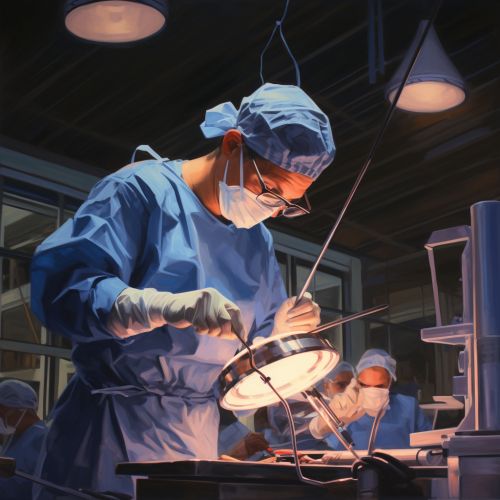Surgical Procedure
Overview
A surgical procedure is a medical intervention in which a surgeon manipulates the tissues of a patient to diagnose, prevent, or treat a disease. Surgical procedures are categorized based on urgency, type of procedure, body system involved, degree of invasiveness, and equipment used. Anesthesia is used to prevent pain during surgery.
Types of Surgical Procedures
Surgical procedures can be classified into several types. Each type of surgery has its own set of procedures, techniques, and considerations.
Elective Surgery
Elective surgery is a planned, non-emergency procedure that is scheduled in advance. It may be a procedure that is beneficial but not absolutely necessary, or it may be a critical operation that can be delayed for a short time.
Emergency Surgery
Emergency surgery is performed in response to a medical emergency, often due to trauma or acute illness. These procedures are typically performed as soon as possible to preserve life, a body part, or function.
Exploratory Surgery
Exploratory surgery is performed to aid or confirm a diagnosis. The surgeon uses this procedure to view and examine the patient's internal structures and organs.
Reconstructive Surgery
Reconstructive surgery is performed to restore function or normal appearance and correct deformities. This type of surgery often involves the use of prosthetics or implants.
Surgical Techniques
Surgical techniques vary based on the type of surgery being performed, the patient's condition, and the surgeon's expertise.
Open Surgery
In open surgery, the surgeon makes a large incision to directly view and manipulate the surgical area. This traditional method allows for a wide field of view and greater control over the procedure.
Minimally Invasive Surgery
Minimally invasive surgery involves smaller incisions, reducing the risk of complications and speeding recovery. This includes techniques such as laparoscopy, endoscopy, and robotic surgery.
Non-Invasive Surgery
Non-invasive surgery involves techniques that do not require an incision or the removal of tissue. Examples include radiosurgery and thermotherapy.
Surgical Instruments
Surgical instruments are specially designed tools that assist the surgeons during a surgical procedure. Each instrument is designed for specific uses during surgery.
Scalpels
Scalpels are small and extremely sharp bladed instrument used for surgery, anatomical dissection, and various arts and crafts.
Forceps
Forceps are used to grasp and hold onto tissues and small objects.
Retractors
Retractors are used to spread open skin, ribs and other tissue, and to hold back underlying organs and tissues, so that body parts under the incision may be accessed.
Sutures
Sutures are used to stitch wounds together.
Preoperative and Postoperative Care
Preoperative and postoperative care are crucial aspects of surgical procedures. They involve preparing the patient for surgery and monitoring them after the procedure.
Preoperative Care
Preoperative care includes explaining the procedure to the patient, obtaining informed consent, conducting a physical examination, and administering preoperative medication.
Postoperative Care
Postoperative care involves monitoring the patient's vital signs, managing pain, preventing complications, and providing a safe and comfortable recovery environment.
Risks and Complications
Like any medical procedure, surgical procedures come with risks and potential complications. These can range from minor issues, such as a small infection, to more serious complications like organ damage or even death.
See Also


